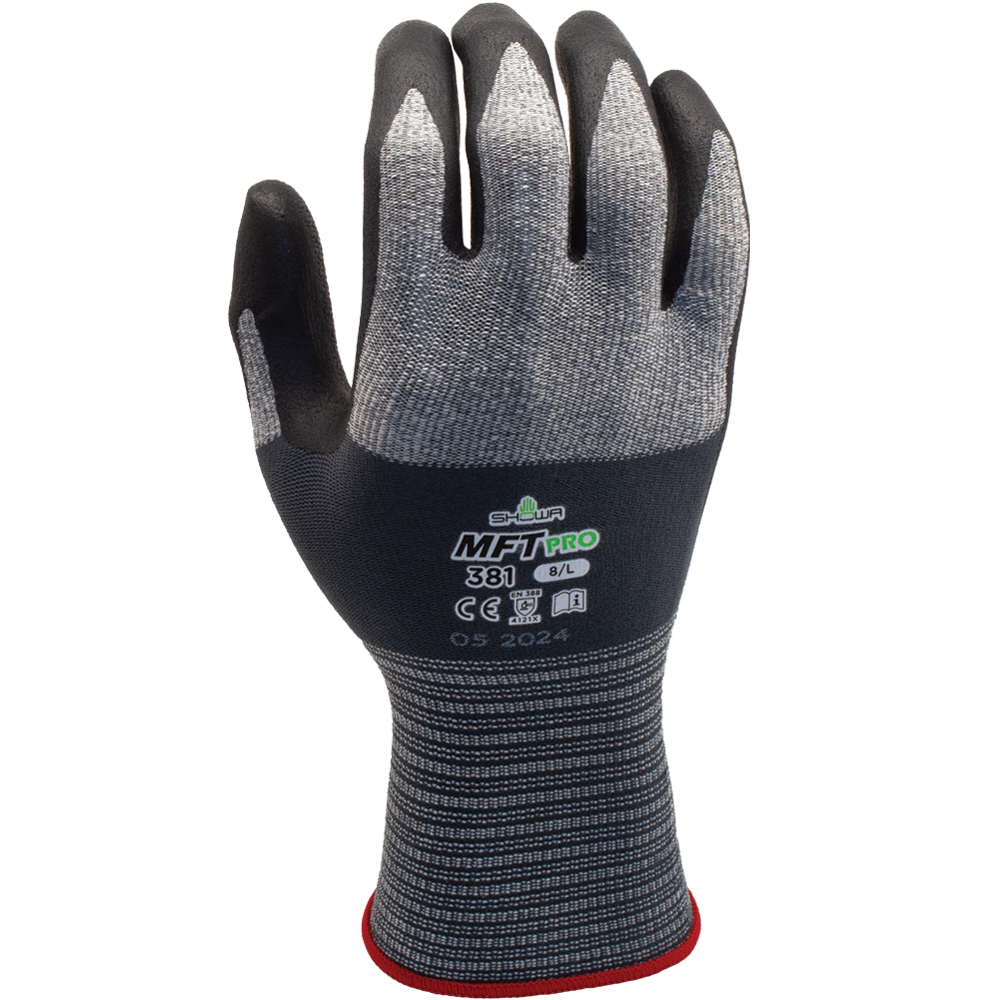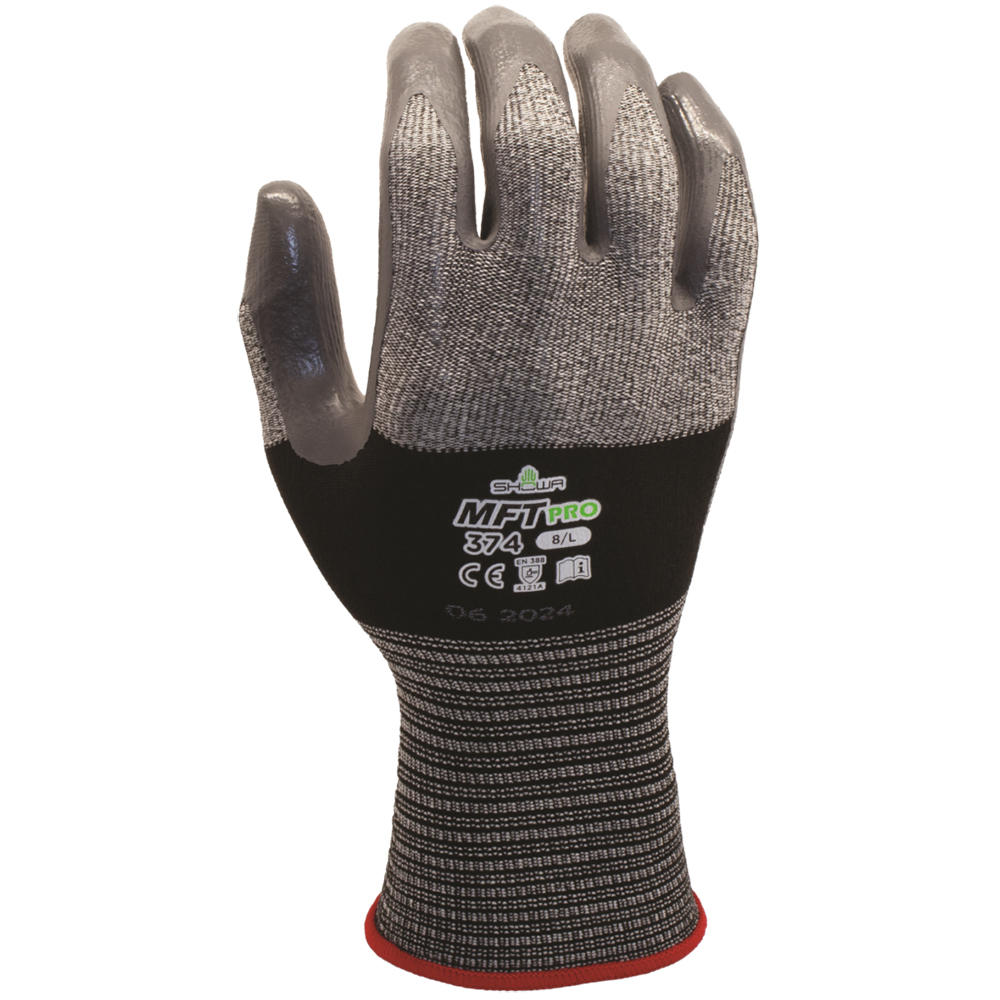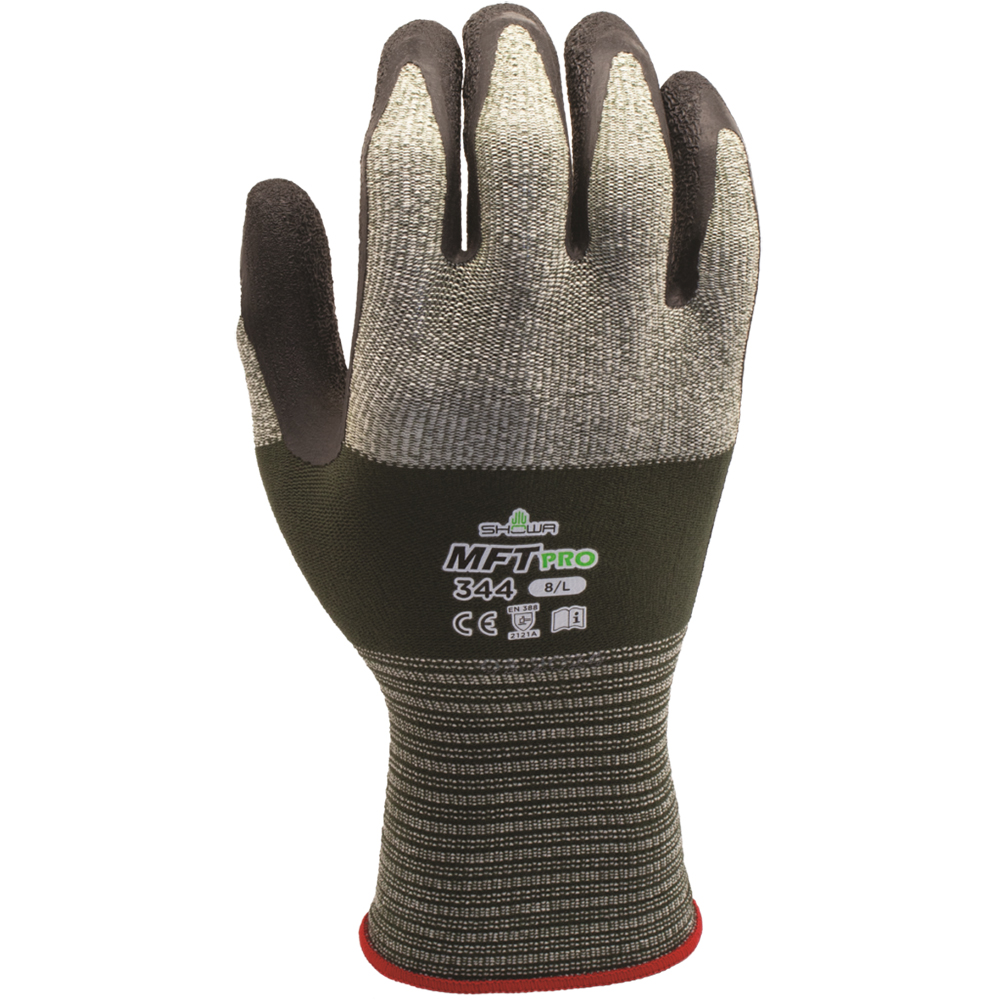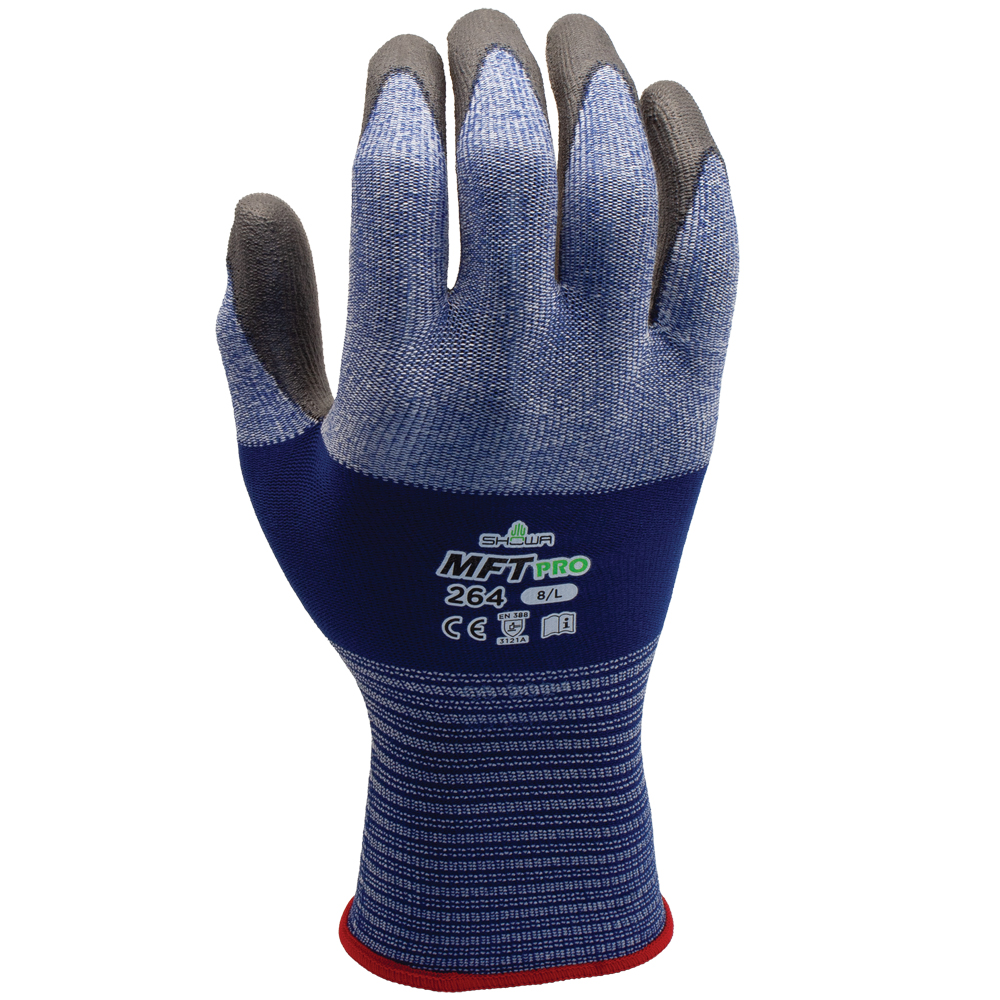SHOWA was the first glove manufacturer to incorporate microfiber technology (MFT) into a general-purpose glove, continuing a legacy of innovation that includes pioneering the first PVC glove, the first disposable nitrile glove and the first biodegradable single-use glove.
“Everybody likes to wear microfiber, because it feels so smooth, and it also breathes. We saw that technology and thought it would make for a great general-purpose glove,” says Christie Graff, national account manager at SHOWA.
Microfiber Gloves Enhance Performance, Cost-Effectiveness
Whereas bulky gloves limit movement and might prompt a worker to take them off to accomplish certain tasks, microfiber gloves are lightweight and designed for comfort, even with extended wear.
SHOWA’s 381 glove, for instance, weighs just 19 grams and has a finger thickness of 0.84 millimeters to ensure optimum tactility when working on delicate projects.
Read more: SHOWA’s Sentinel Program: Protection That Pays
Another benefit that contributes to usability: “Microfiber helps wick away moisture to give you enhanced fit, feel and grip through the palm and fingertips with maximum breathability,” Graff says.
In demonstrations at shows, SHOWA’s microfiber fabric absorbs water droplets in about two seconds compared with 11 to 14 seconds on traditional nylon fiber. The faster absorption illustrates the ability to quickly pull moisture away from the skin.
“When you’re talking about these wet, humid environments, you want the glove to absorb the moisture,” Graff says.
“The microfiber liner used in the 381 enhances the flexibility and workability for users. Some comment that they feel like the glove is actually an 18 gauge,” she says. “The feedback has been phenomenal.”
Microfiber gloves are machine washable and reusable, so they’re a cost-effective choice in hand protection for many employers. Also, as SHOWA notes, durability extends the glove’s lifespan and contributes to cost savings over time.
“There is reduced cost based on the usage of the glove because they’re wearing them longer, because they’re more comfortable to wear, and they’re absorbing the moisture instead of it just sitting on the glove,” Graff explains.
The Power of Microfiber Glove Palm Coatings
A microfiber glove’s performance is enhanced by palm coatings, which resist abrasion and improve a worker’s holding capability on tools and workpieces.
Nitrile is a common coating on gloves, including SHOWA’s 381. Micropores in the polymer provide grip when wet, oily or greasy. But other applications may require a different palm coating, Graff says.
Read more: How SHOWA EBT Gloves Protect Both Workers and Their Environment
Meeting this need, SHOWA has expanded and branded a line of microfiber gloves based on the 381 to include foam nitrile and three new palm coatings.
“To make use of the features of the microfiber liner, we launched a variety of palm-coating materials that include flat nitrile, natural rubber and polyurethane,” Graff says. “Users can select the glove for the most suitable application.”









Talk to Us!
Leave a reply
Your email address will not be published. Required fields are marked *